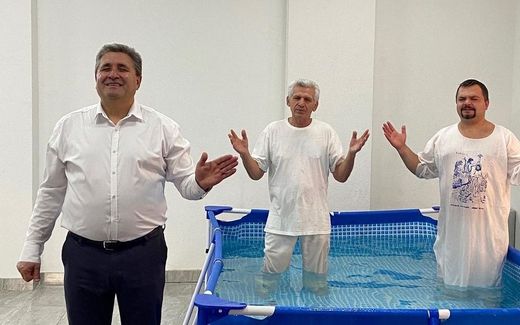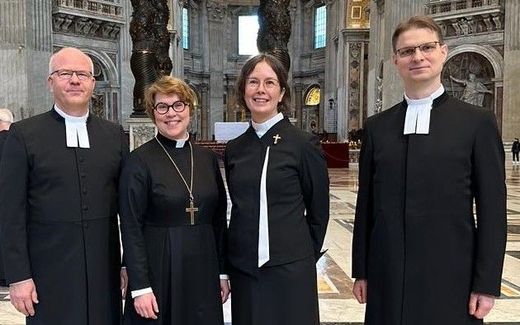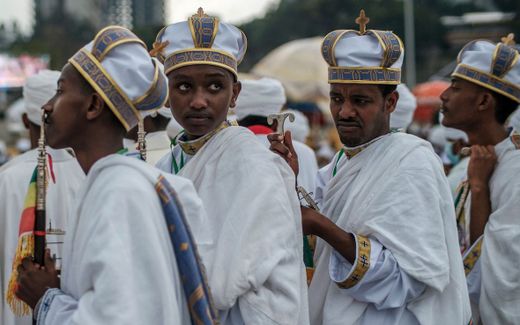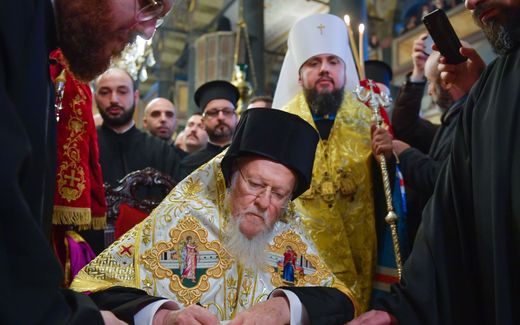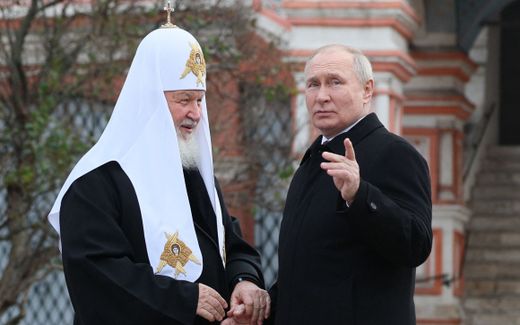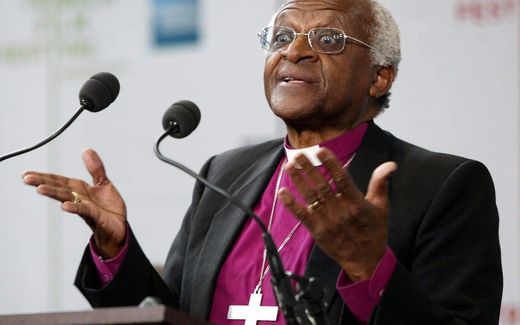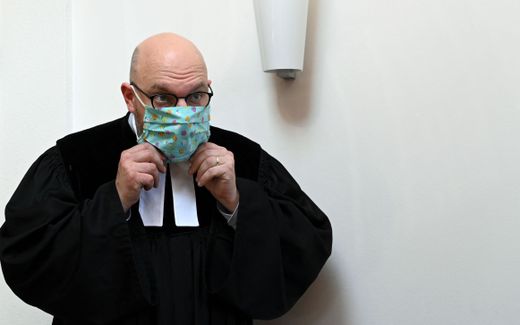Since Luther laid down his clerical dress, what should we do?
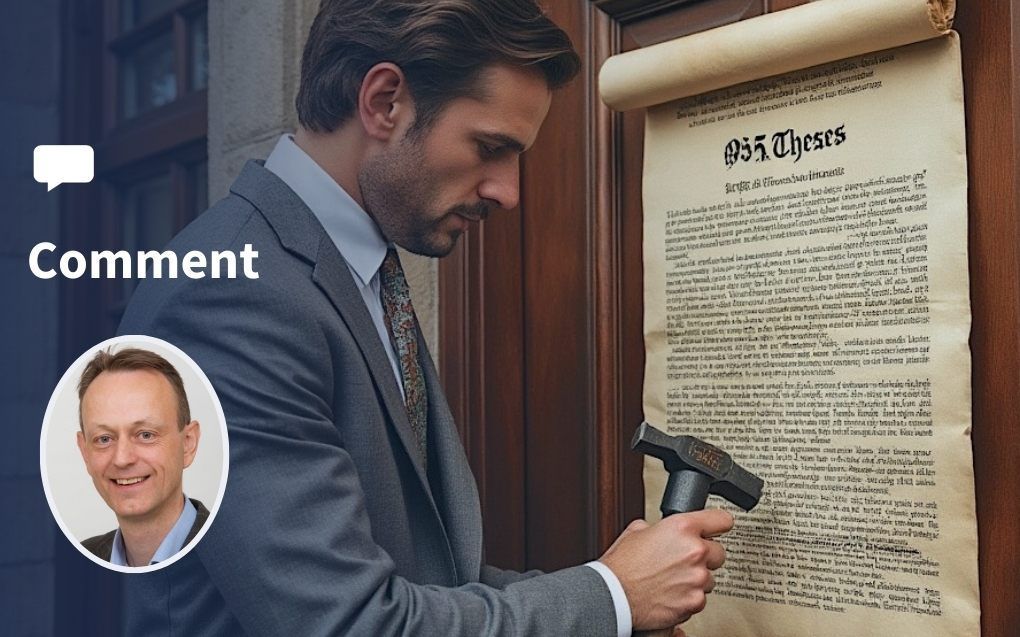
How would Luther have looked if he had brought out his thesis in regular clothing, in which he preached later? This is what artificial intelligence made from it. Photo Grok
Opinion
This column is about something that happened 500 years earlier – no problem if you have forgotten about it. On 9 October 1524, Martin Luther ascended the pulpit in regular, civilian clothes, no longer in a monk’s habit. Without this act, the revolution he unleashed seven years ago would not be complete. Even today, it is good to reflect upon this.
Stay up to date with Christian news in Europe? Sign up for CNE's newsletter.
For a medieval priest and professor like Luther, dress was important. With clerical clothes and a tonsure (shaven head), you were distinct from the rest of the society. You were set apart (which meant holy).
As an ordinary blacksmith, you would not dress like a nobleman or a clergy person. You should wear clothes that belong to your group. To do that otherwise could be seen as proud and rebellious.
Doctor
Before 1517, Luther wore not just a monk’s habit but was recognisable as a monk of the Augustinian order. As a doctor and professor, he would wear a hat. But underneath his hat, he would be bald because of his tonsure.
As a person in Wittenberg, you could not be wrong if you met Luther in the street. It might be compared to today’s police: from a great distance, you see the cop coming and which unit he belongs to.
Luther published his 95 theses about the church’s teaching and practice in 1517. The consequences of that had not been limited to a conversation about doctrine. In 1524, it was already clear that all elements of the church were to be reformed. The Bible came there in German. In the church, preaching God’s Word had received more weight. And the whole church constitution (including the hierarchy of the offices) was about to change.
Freedom
On top of all that, Luther decided to wear regular clothing. He started with that at home earlier. But on 9 October 1524, he finished this process by preaching in civilian dress. God’s Word had power in itself, he might have thought. My clothing or my ordination cannot enhance its power. And my hair underlines the newly discovered evangelical freedom.
He stood there as a normal human being. No longer set apart but together with all others under the authority of God’s Word. A person who could marry just fine, too – which he did one year later.
Later, Luther started wearing a sort of gown again in the pulpit to underline the dignity and high value of the ministry. This shows that he felt that preaching God’s Word deserved some distinction and respectability that normal clothes lacked. Occasionally, he would wear the old mass robe when serving at communion.
Taste
Well, this is all 500 years ago. How is this for us now? The first thing is that dress is no longer connected to class but to individual taste. This is due to an informalisation process in society. You may like it or not, but this is part of our European culture.
In addition, clothing today is a consumer item –sometimes even a throw-away item– which is very different from Luther’s days. Cloth was scarce and therefore expensive.
Since we have so many clothes, we can change quite easily and adapt our dress to the occasion. On Saturday, you might work at home in your garden in an old pair of jeans. On Sunday, you might go to church in clothes in the same style as our king. And on Monday, we go to work in an outfit that is decently styled between Saturday and Sunday.
Champions
Despite the strength of informalisation, clerical dress still exists. Funny enough, in the Protestant realm belong the Lutheran churches to the champions of this. In the Dutch Calvinist tradition I grew up in, clerical dress has never been part of the official church order. But in practice, there has always been a strong expectation that ministers would dress in a very formal style.
For a few years, I have been serving as an elder. And it is customary for the whole consistory (minister, elders and deacons) to wear a black suit with a white shirt and a tie. Traditionally, the tie would be black or grey, but I am happy to wear at least something coloured.
It is not fully clear to me where this custom comes from. You don’t read about it in the Dutch Puritans (17th and 18th century). I guess it is something from the nineteenth century. And the tradition is still in use.
Black suit
The model I have in mind for this is the Reverend L. H. Oosten (1940-2021). He was a minister in the Dutch Reformed Church (NHK) and always wore a black suit and tie. When preaching on Sundays, he would often wear a gown.

He was also on the board of the Christian newspaper Reformatorisch Dagblad, and there I met him quite a few times. There, he would dress the same. Being a board member of a Reformed newspaper was not a secular job for him but part of his ministry.
He was an earnest and conscientious man but also had a good sense of humour. His deep conviction was that an office in the church was connected with a particular habit that would express itself in dress, too. He once said in an interview that he regretted that younger pastors were no longer recognisable as such. I don’t think anybody has ever seen Rev. Oosten in jeans or shorts. And outdoors, he would always wear a hat.
This style also very much belonged to him as a person. When you spoke with him, you would always say Reverend (“dominee”), never Mister or Sir. He was different, carrying a high calling that everyone respected.
War
In the decades after the Second World War, most Protestant ministers dressed more or less the same as Rev. Oosten. But in those days, almost all men in the street wore a hat and a tie. The pastor looked a bit different, but not that much. In that way, all the younger ministers just followed the general tendency of society, including Christians.
On Sundays, many ministers still wear church suits like Rev. Oosten’s. Especially in more conservative Reformed circles, many dress like that on weekdays too (apart from the hat); other ministers do so only on particular occasions.
This is undoubtedly stylish. It shows that the ministry is not cheap but distinguished. It also creates a certain distance from the church people, which can be helpful in some pastoral situations.
Funeral
But the general tendency is informalisation here, too. This is especially true in free evangelical churches (Pentecostals, etc.). It is their mark to break away from traditional churches with their “legalism”, confessions and “Sunday dress”. For example, I have witnessed a pastor leading a funeral who was the most informally dressed person on the occasion.
As I said, the clerical dress in the old Dutch Reformed Church is semi-official. It is a custom shaped by tradition. The Reformed Church was never the official state church like the Anglican Church in Great Britain or the Lutheran Church in the Scandinavian countries, but it still had a central place in national life. The church became part of the establishment in the Low Countries. Still, today, for instance, it is unthinkable that the Royal Family would transfer to one of the other denominations.
And this is what we know about the establishment phenomenon in general: it loves formality. Formality in clothing, formality in language, and formality in manners. If the Reformed message had entered our country today, we might have probably shaped things otherwise. But since its long history, you sort of continue certain traditions. And so, I can very well imagine that the thing Luther did in October 1524 was experienced as very naughty.
Collar
Churches all over Europe have a different history. What is important in one country is neglected in another. What we know is that the older church families (like the Lutherans, the Anglicans, and the Reformed) are usually more focused on clerical style than the younger movements, like the Pentecostals.

It is interesting that the clerical collar is widespread worldwide. It seems to be quite a recent invention from the nineteenth century, even from Presbyterian Scotland. It was a simple element that distinguished church ministers from ordinary people. Soon, it spread over the denominations quickly, not only to Lutherans, Anglicans, and Catholics but also to some Methodists and Baptists.
But Reformed office-bearers seem not to be impressed by the collar. They still wear a normal shirt and tie, which lay people could also wear. About fifteen years ago, there was a wave among some Dutch ministers wearing a clerical collar, but this disappeared as soon as it appeared.
The great advantage of a collar is that you can wear it with clothes of your own choice. The collar speaks whether the shirt is black, purple, or blue. And your jacket doesn’t matter either. I have even seen a clerical collar on a jean jacket (which looked funny but was still recognisable). To go back 500 years to today: Was Luther right in forgetting the monk’s habit? Well, history is never right or wrong. We have to accept what has happened. But for us today, it is right to ask how we can serve the Lord in a way that does not degrade the Word of God but rather glorifies Him in our local circumstances.
How do you preach?
All over Europe, preachers use a different dress. If you are a pastor, please let us know what you do. If you have an opinion or insight about this, please share it with us. If there is enough response, we could write a new article based on those reactions. Of course, an additional photo of your dress, tie or collar would complete that response.
Simply reach us at info@cne.news.
Related Articles


